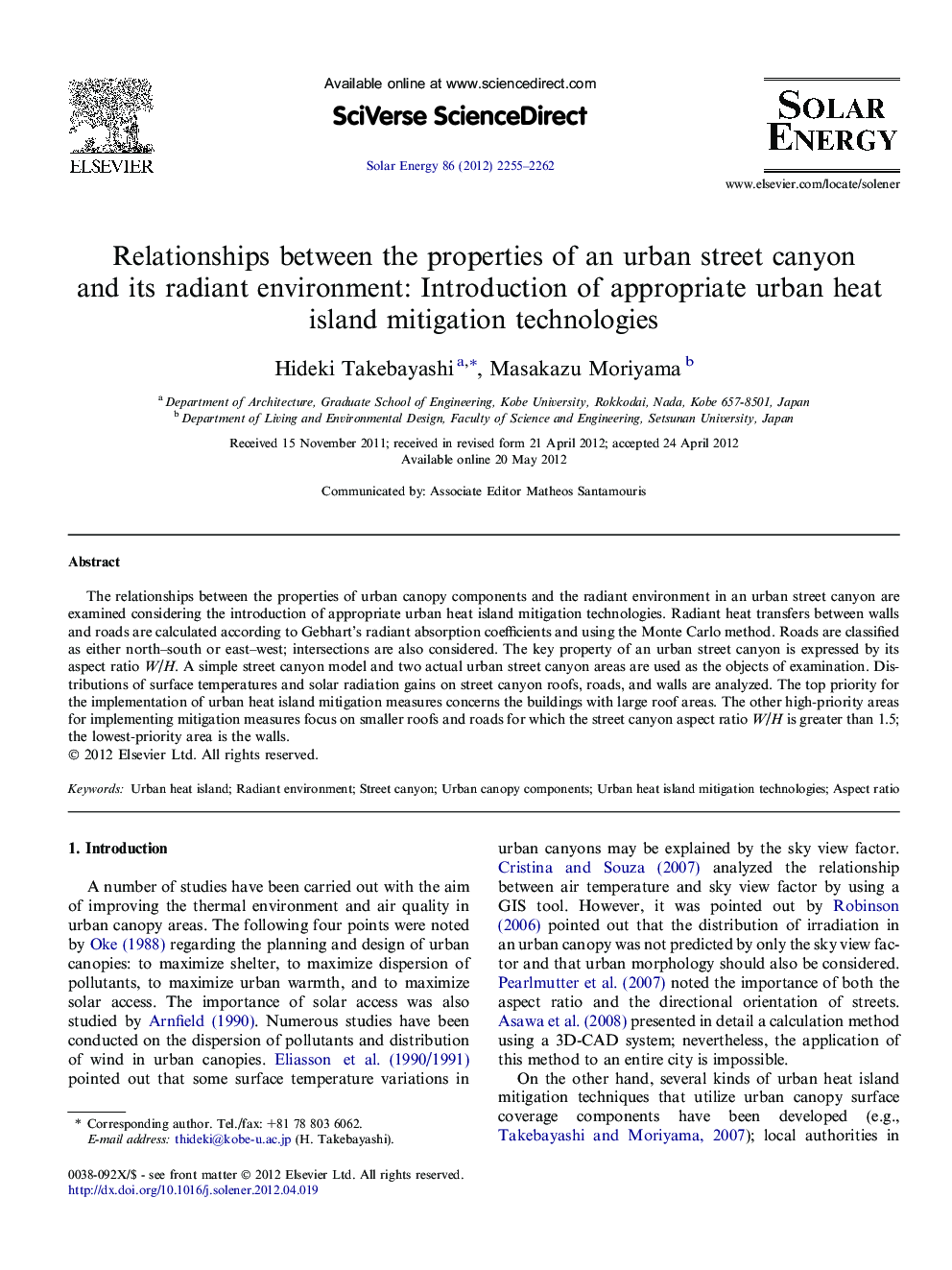| Article ID | Journal | Published Year | Pages | File Type |
|---|---|---|---|---|
| 1550878 | Solar Energy | 2012 | 8 Pages |
The relationships between the properties of urban canopy components and the radiant environment in an urban street canyon are examined considering the introduction of appropriate urban heat island mitigation technologies. Radiant heat transfers between walls and roads are calculated according to Gebhart’s radiant absorption coefficients and using the Monte Carlo method. Roads are classified as either north–south or east–west; intersections are also considered. The key property of an urban street canyon is expressed by its aspect ratio W/H. A simple street canyon model and two actual urban street canyon areas are used as the objects of examination. Distributions of surface temperatures and solar radiation gains on street canyon roofs, roads, and walls are analyzed. The top priority for the implementation of urban heat island mitigation measures concerns the buildings with large roof areas. The other high-priority areas for implementing mitigation measures focus on smaller roofs and roads for which the street canyon aspect ratio W/H is greater than 1.5; the lowest-priority area is the walls.
► The key property of an urban street canyon is expressed by its aspect ratio W/H. ► The top priority area of heat island mitigation measures is the building roofs with large roof areas. ► The other high-priority areas are smaller roofs and roads for which W/H is greater than 1.5. ► The lowest-priority area is the walls.
